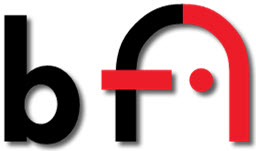Our Cooperation Partners
Otto-von-Guericke-University Magdeburg
Under the direction of Prof. Bernhard A. Sabel, the Institute of Medical Psychology deals mainly with neuropsychological and neurobiological problems concerning the plasticity of the brain and the restitution of visual functions. The focus is the development of new therapeutic methods for patients with visual system damage. Since its foundation in 1992, intensive research and teaching has been carried out at the IMP in this field.
VIREGS
TheVision Restoration Graduate School (VIREGS) is a German-Chinese Graduate Program for Chinese, German and international doctoral students who carry out a thesis project in the context of a structured research and education coaching program in Germany. It is a joint activity of different laboratories at the Otto-v.-Guericke University of Magdeburg and different research groups in China.

International Brain Injury Association
IBIA is dedicated to the development and support of multidisciplinary medical and clinical professionals, advocates, policy makers, consumers and others who work to improve outcomes and opportunities for persons with brain injury.
Savir Center has been recognized by the International Brain Injury Association (IBIA).

Association for the Support of Visually Impaired People E.V.
The BFS e.V. is the only nationwide self-help organisation that represents the concerns of all visually impaired people – regardless of the type and severity of the disability.

Research Association REVIS
The research association “REVIS” (Restoration of Vision after Stroke) is engaged in the plasticity of the visual system and the evaluation of a non-invasive electrical brain stimulation procedure for the restoration of visual performance. There are 11 million stroke patients worldwide who experience considerable daily problems due to visual impairment (2.1 million new cases per year). By strengthening neuronal plasticity using non-invasive electrostimulation, visual performance in areas of residual vision could be improved in patients with visual field defects after posteriorinfarcts. Using a broad range of methods, visual impairment will first be identified and finally characteristics of post-lesion plasticity after brain stimulation (reorganization of receptive fields, local activation and connectivities) will be documented. Alternating or direct current stimulation (supraorbital or transcranial) is intended to cause changes in both local and global plasticity and thus enable a significant improvement in visual performance, which is relevant to daily life and leads to an improved visual quality of life (e.g. orientation in space and reading performance).
